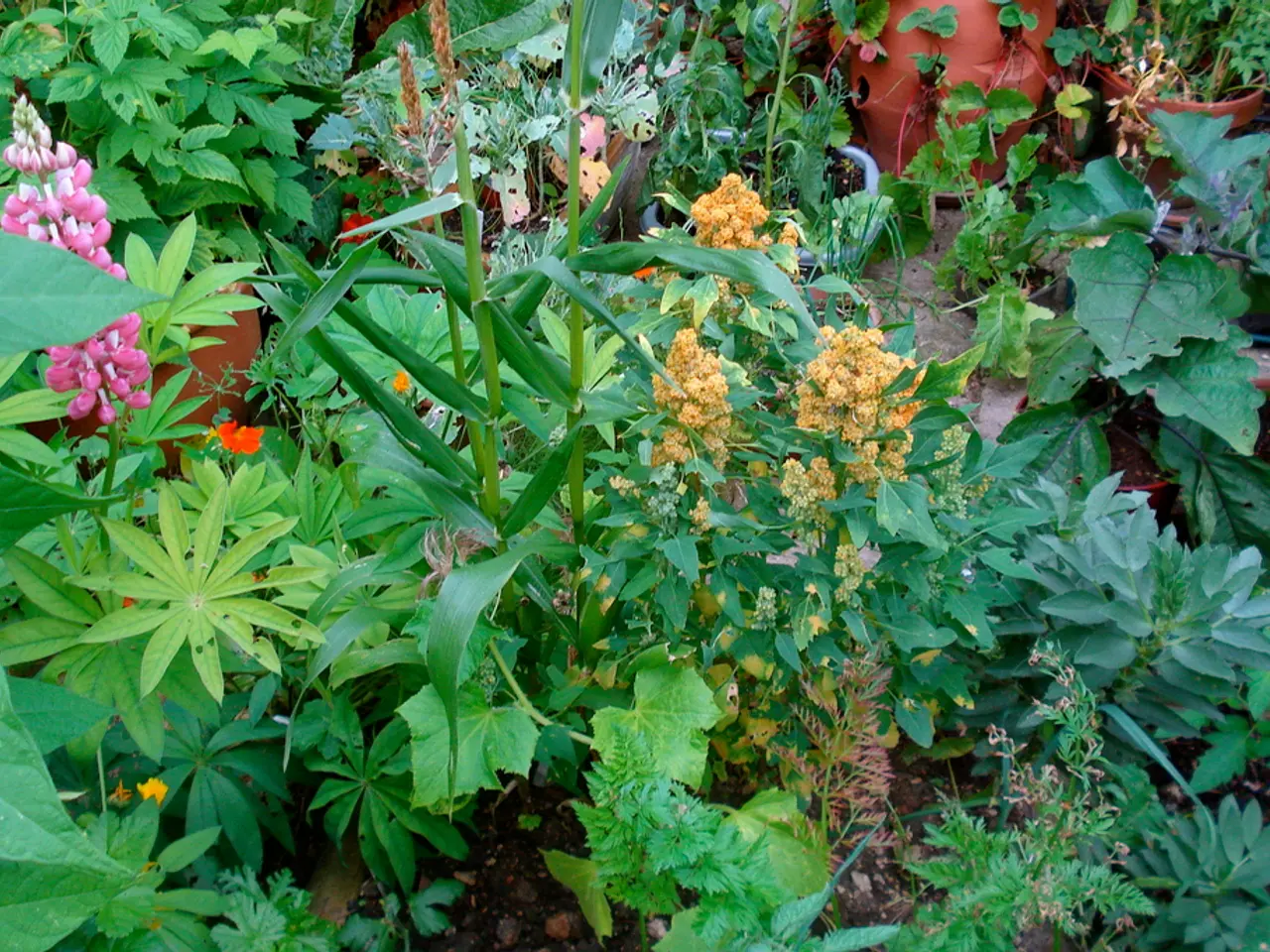Cultivate Six Times-Honored Agricultural Produce for Enhanced Health and Eco-Friendliness Today
In recent years, there has been a growing interest in ancient crops that can thrive in various climates and soil conditions. These crops, many of which were cultivated thousands of years ago, offer a unique opportunity for home gardeners in the United States to connect with history while enjoying nutritious and hardy produce.
Let's take a look at some ancient African crops that are suitable for home gardening across USDA hardiness zones 3 to 13:
- Amaranth: Originating from Africa, this ancient grain and leafy vegetable is tolerant of warm climates (zones 4-11). It prefers full sun and well-drained soil. Amaranth seeds can be treated like a grain, similar to quinoa, and every part of the plant is edible. Amaranth is drawing attention today for its drought tolerance, which is particularly important in the context of climate change.
- Fonio: One of the oldest grains cultivated in Africa, Fonio is high in protein, gluten-free, and contains many micronutrients. It grows well in zones 3 through 10 and cooks very quickly into a porridge-like consistency.
- Cowpea (Black-eyed peas): Specifically black-eyed peas (Vigna unguiculata) is a type of cowpea traditionally grown in Africa. Every part of the cowpea plant is edible, not just the beans.
- Bambara: This peanut-like groundnut native to Africa is more drought tolerant than peanuts. Bambara produces edible seeds in pods that ripen below the soil, and its groundnuts are legumes similar in size to peanuts and very high in protein.
- Taro: Native to the subtropics and tropics of southeast Asia and the Polynesian islands, taro's edible corm is rich in nutrients and high in fiber with a low glycemic index value. However, it's important to note that taro leaves are edible, but only if cooked properly as they contain toxins when raw.
- Moringa: Moringa is a tree with edible leaves, roots, and seed pods. It can grow to about 35 feet (11m) tall and is adaptable to a wide range of USDA hardiness zones (3-13).
When growing ancient crops, it's essential to consider their general growing conditions: well-drained, fertile soil is preferred for most crops, though some tolerate poorer soils. Most crops need full sun (at least 6 hours/day) and moderate watering, avoiding waterlogging. Frost tolerance varies; some crops like fava beans tolerate frost (zones 3+), while others like amaranth need frost-free conditions (zones 4+).
For the best results, consult local extension services or gardening resources that provide zone-specific planting dates and conditions to select the best crops for a specific USDA zone within 3-13.
These ancient African crops offer a rich and nutritious addition to any home garden and provide a fascinating glimpse into the history of agriculture. Happy gardening!
- Beyond their historical significance, these ancient African crops like amaranth, fonio, cowpea, bambara, taro, and moringa, boast numerous health benefits, such as improved workplace-wellness, family-health, and mens- and womens-health due to their high nutrient content.
- A growing trend in health-and-wellness enthusiasts focuses on incorporating these ancestral crops into cooking for a more diverse and healthy food-and-drink choices, bolstered by their presence in global-cuisines.
- Fonio, for instance, is a gluten-free grain rich in protein that can help with weight-management and aging, making it a popular choice in the realm of nutrition.
- Bambara is attracting attention for its superior drought tolerance and high protein content, making it suitable for gardening even in times of climate change and water scarcity.
- Amaranth, with its ability to be cooked like quinoa, is a versatile crop offering a multitude of health benefits, from addressing skin-care concerns to supporting various therapies-and-treatments.
- Taro, with its low glycemic index, is an ideal proposition for those seeking better control over their food-and-drink consumption and food-and-drink-related lifestyle health concerns.
- Home gardeners must remember that while these crops are easily adaptable to various USDA hardiness zones (3-13), certain conditions like frost tolerance, sun exposure, and soil type may vary from crop to crop; hence, proper research using resources like local extension services and gardening books is essential for optimal growth and healthy produce.
- Parenting, too, can benefit from these ancient crops, with their inclusion in recipes facilitating the imparting of health-conscious lifestyles to children through education about global-cuisines and virtues like gardening.
- Including these hearty crops like cowpea, taro, bambara, and moringa in kitchen experiments and healthy-cooking endeavors can help families achieve greater levels of health-and-wellness and fitness-and-exercise.
- Medicare, too, may find merit in promoting these nutritious crops, considering their potential long-term impact on chronic diseases.
- Lastly, the incorporation of CBD into therapies-and-treatments for various ailments, such as depression and pain relief, can find a complementary ally in these ancient crops, given their groundbreaking properties and versatility in health-and-wellness applications.




